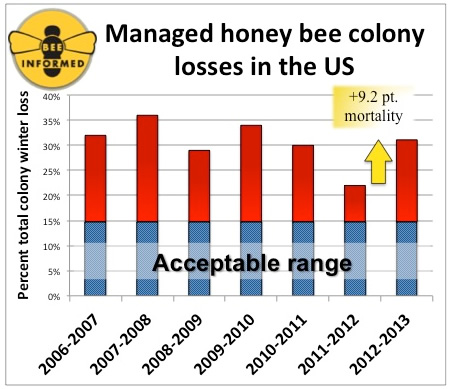
'Nuff Said
Carolina Naturally is read in 191 countries around the world daily.
Don Quixote, where are you?! ...
Today is Windmill Day
Don't forget to visit our sister blog!


How could the scheme go on for so long even as federal judges complained about fraud, as "John Doe" defendants complained repeatedly that they had no idea what the cases were about, and as critics complained about the injustice of the entire business model? The answer is that federal judges aren't generally investigators. Prenda had gone to great lengths to obscure what was really going on, who was doing what, and where the money went. Judges want to clear cases off their dockets and in rare cases will entertain sanctions motions, but to unravel something as complex as Prenda's behavior required a real investigation. Yet without more details, actual criminal investigators had very little to go on; most of the judicial complaints dealt with behavior in court, not public crimes.But as EFF's Stoltz explains, this isn't a bug in the system, it's a feature. Modern copyright law has been bought, paid for, and designed by the entertainment industry, and they demanded as system with as few safeguards and checks and balances as possible. Every element of copyright law that might enable an innocent person to easily defend herself meant added expense and burden for the entertainment industry's lawsuits against its customers and against technological innovators:
So Prenda could essentially turn the entire US judiciary into a laboratory for incrementally refining its porn trolling techniques, testing venues, judges, corporate structures, collection procedures, and legal arguments, looking for perfection. And what it arrived at in the end had a certain devious logic to it. Even Otis Wright, the federal judge in Los Angeles who brought down Prenda's principals and referred them all for criminal and tax prosecution this week, had to concede the conceptual beauty of the system.
Consider this: U.S. copyright law provides statutory damages of up to $150,000 per work - without the copyright owner having to show actual harm. Individuals have been hit with damages in the six figures, and companies with bankrupting judgments in the tens of millions. Threats of damages like this are one of the main ways that copyright trolls convince their victims to pay $2,000 to $4,000 in "settlements." But statutory damages are also wielded as a club by entertainment, media, software, and technology companies. They can destroy competitors and dry up investment with mere threats of litigation, giving them veto power over new technologies and emerging artists.As Stoltz writes, Prenda is just the beginning. The US copyright system is an attractive nuisance, a moral hazard on steroids, and the entertainment indsutry's own much-publicized efforts are the tip of the iceberg. Prenda's masterminds weren't all that clever -- there are smarter con artists out there who've learned a lot from Prenda's efforts, and they're licking their chops and getting ready to prey on you and your neighbors. And as with Prenda, we'll all foot the bill for their cons, thanks to Big Content's depraved indifference to the fallout from its legal projects.
And consider "secondary liability," the judge-made rules for when one person can be held responsible for copyright infringement by another. The rules are vague and their application often uncertain. Copyright trolls use this uncertainty to make plausible-sounding threats against Internet subscribers. You may not have been the one who downloaded our movie, say the trolls, but your name is on the cable bill and the law will hold you responsible. It's not always true - in many cases, an ISP subscriber is protected from liability for others' downloading - but the rules are vague and complex enough to make the threat sound real.
Looking beyond trolls, the same vague legal principles create legal nightmares - and sometimes financial ruin - for people that try to play by the rules. Companies like ReplayTV and Veoh went bankrupt trying to convince courts that they shouldn't be held responsible when customers copy TV and movies. Dish Networks/ReplayTV, YouTube, and many less prominent technology companies face lawsuits where the toolmaker must answer for the tool user. Only lawyers benefit, as vagueness means long fights and lots of legal fees.
But a Financial Times analysis of last year's tips shows decidedly mixed results. An investor who followed every top idea from the 12 speakers last year would have made 19 per cent, less than the 22 per cent gain available from a passive index fund tracking the US stock market.
Many of the ideas have proved woefully miscued, including some from the most high-profile managers who will return to the stage on Wednesday: David Einhorn of Greenlight Capital and Bill Ackman of Pershing Square.


The instructions include a read-only drum memory for storing the computer program (much like a player piano roll), made from a juice can, with read heads made from bent paper clips. A separate manually-operated “core” memory (made of paper-clip switches) is used for storing data.
So can this “paper clip” computer actually built, and if so, would it work? Apparently yes, on both counts. Cleveland youngsters Mark Rosenstein and Kenny Antonelli built one named “Emmerack” in 1972 (albeit substituting Radio Shack slide switches for most of the paper clips), and another was built in 1975 by the Wickenburg High School Math Club in Arizona. And, at least one modern build has been completed, as you can see on YouTube.

"I love bacon, I eat it everyday", says Pearl, "I don't feel as old as I am, that's all I can say", she explains.
Still feisty and full of life, Pearl has been through a lot, and has plenty of reasons to complain or even give up. After mothering seven children, outliving three of them, losing a husband, and enduring decades of physical labor, she still has a smile on her face.
"I would go to the field and work till dinner, then come home to fix dinner, then I would go back out to the field and work again until supper", Pearl tells us.
But Pearl's daughter, Anno, says complaining is the last thing you'll ever hear her mother do.
"She's taught us to work hard and to get up every morning and think about living. She's never thought about dying", says Anno.

"I think we underestimate the impact of sleep. Our data show that across countries internationally, on average, children who have more sleep achieve higher in maths, science and reading. That is exactly what our data show," says Chad Minnich, of the TIMSS and PIRLS International Study Center.But what about those Asian students who study all the time?
"It's the same link for children who are lacking basic nutrition," says Mr Minnich, based at the Lynch School of Education, Boston College.
Asian countries are the highest-performing in maths tests - and Mr Minnich says this has often been associated with long hours and cramming in after-school classes.Minnich placed the blame on smartphones and laptops. Sean Coughlan of the BBC has more: Here.
"One would assume that they would be extremely tired," he said. "And yet when we look at the sleep factor for them, they don't necessarily seem to be suffering from as much sleep deprivation as the other countries."







“We’re getting closer and closer to the point where we don’t have enough bees in this country to meet pollination demands,” said entomologist Dennis vanEngelstorp of the University of Maryland, who led the survey documenting the declines.
Beekeepers lost 31 percent of their colonies in late 2012 and early 2013, roughly double what’s considered acceptable attrition through natural causes. The losses are in keeping with rates documented since 2006, when beekeeper concerns prompted the first nationwide survey of honeybee health. Hopes raised by drop in rates of loss to 22 percent in 2011-2012 were wiped out by the new numbers.
The honeybee shortage nearly came to a head in March in California, when there were barely enough bees to pollinate the almond crop.
Had the weather not been ideal, the almonds would have gone unpollinated — a taste, as it were, of a future in which honeybee problems are not solved.
“If we want to grow fruits and nuts and berries, this is important,” said vanEngelstorp. “One in every three bites [of food consumed in the U.S.] is directly or indirectly pollinated by bees.”
 Paraceratherium
was a rhinoceros that lived around 20 million years ago. Standing tall
with a longer neck, it doesn't much resemble a modern rhinoceros. The
15-20 ton giant is the subject of a new book by paleontologist Donald
Prothero called Rhinoceros Giants. But it's not just about Paraceratherium. It's also a book about paleontologists finding evidence of Paraceratherium.
Paraceratherium
was a rhinoceros that lived around 20 million years ago. Standing tall
with a longer neck, it doesn't much resemble a modern rhinoceros. The
15-20 ton giant is the subject of a new book by paleontologist Donald
Prothero called Rhinoceros Giants. But it's not just about Paraceratherium. It's also a book about paleontologists finding evidence of Paraceratherium.For more than the first half of the book, in fact, Paraceratherium only appears as scattered fragments that puzzled and inspired successive generations of paleontologists. Prothero recounts the lives of fossil mammal researchers such as Walter Granger, Henry Guy Ellcock Pilgrim, Clive Forster Cooper, and Zhou Ming-Zhen, among others, in detail before diving into the geological particulars of where Paraceratherium bones are found and where the giant fit in the wider rhino family tree. While a giant rhino without a horn might look odd compared to living species, Prothero points out that Paraceratherium belonged to a major and totally-extinct group of rhinos, and that most fossil rhinos don’t show any evidence of horns at all. Modern rhinos might look prehistoric, but they’re actually quite different from their varied predecessors.Read more about this rhino and the book at Laelaps.



